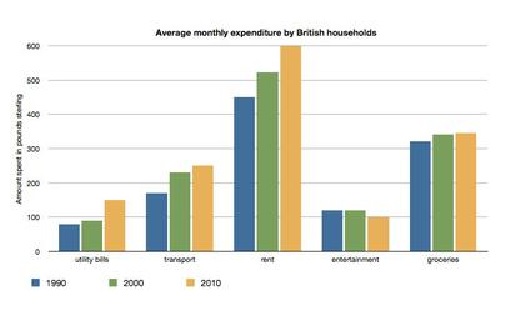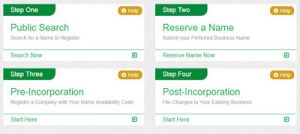Understanding The Cost Breakdown In Cost Accounting – Cost accounting is a branch of accounting that deals with the identification, measurement, analysis, and interpretation of costs and expenses associated with producing goods or providing services. One of the fundamental concepts in cost accounting is cost breakdown, which refers to the process of identifying the different components of a product or service and assigning a monetary value to each component. By understanding the cost breakdown, businesses can analyze and manage their costs more effectively, which can lead to improved profitability and competitiveness. In this article, we will delve deeper into the cost breakdown in cost accounting and discuss its importance and different methods.
Completfmc. Business Tips:
Table of Contents
Always get comprehensive business tips from here. So, you can bookmark this page for further updates.
Do you desire professional services on Business plan and feasibility study, C.A.C.Incorporation, Accounting and Auditing, Tax Management, Mining, travel and tours, feasibility analysis, or real estate management, then contact [email protected] or +234 8034347851. The following is related to this post – Understanding The Cost Breakdown In Cost Accounting. Understanding The Cost Breakdown In Cost Accounting
- Who is a bookkeeper?
- SCUML Certification: This is how to go about it
- Accounting Cycles for business start-ups
- Benefits of Cost Accounting for your business
- Jobs in the Accounting Profession
- Basic Accenting for your business
- GAAP for small business
- Statement of Affairs for CAC Annual Returns
What is Cost Accounting?
Cost accounting is the process of identifying, measuring, analyzing, and allocating the costs associated with a business operation. This involves tracking and analyzing all costs incurred by a company in producing its products or services, including direct costs such as materials, labor, and overhead costs such as rent, utilities, and depreciation of equipment.
The primary goal of cost accounting is to determine the actual cost of producing a particular product or providing a particular service. This information is then used to make informed decisions about pricing, production, and profitability. Understanding The Cost Breakdown In Cost Accounting
Cost accounting is also used to help businesses create budgets, track actual expenses against budgeted amounts, and identify areas where cost savings can be achieved. It can also be used to analyze the profitability of individual products or services and to identify areas where production costs can be reduced.
Overall, cost accounting is an essential tool for businesses to understand the costs associated with their operations and make informed decisions to maximize profitability and reduce costs.
Who is the Cost Accountant? Understanding The Cost Breakdown In Cost Accounting
A Cost Accountant is a professional who is responsible for managing and analyzing financial data related to the cost of producing goods or services in a company. They use their expertise in accounting, finance, and cost management to help businesses make informed decisions regarding pricing, inventory, budgeting, and profitability.
The primary role of a Cost Accountant is to identify, measure, and analyze the various costs associated with producing goods or services. This includes direct costs such as materials and labor, as well as indirect costs such as rent, utilities, and overhead expenses. By collecting and analyzing this data, Cost Accountants can provide management with information on the cost of producing each product or service, allowing them to make informed decisions about pricing, production processes, and profitability. Understanding The Cost Breakdown In Cost Accounting Matters. Understanding The Cost Breakdown In Cost Accounting
In addition to their core responsibilities, Cost Accountants may also be involved in budgeting, financial planning, and cost control initiatives. They may work closely with other members of the accounting and finance team. Then, as well as with operational and management personnel, to ensure that the company’s financial goals re met.
Understanding The Cost Breakdown In Cost Accounting
The objective of cost accounting:
The primary objective of cost accounting is to help businesses understand and manage their costs effectively. This involves the systematic recording, analysis, and reporting of all costs associated with producing goods or services, with the aim of providing accurate and timely information to management for decision-making.
Some specific objectives of cost accounting include:
- Determining the cost of production: Cost accounting helps businesses to determine the cost of producing goods or services, including direct and indirect costs. This information is used to set prices, evaluate profitability, and make decisions regarding production processes.
- Cost control: Cost accounting helps businesses to control their costs by identifying areas where costs can be reduced or eliminated. This may involve analyzing the cost of various inputs such as labor, materials, and overheads to identify inefficiencies and areas for improvement. Understanding The Cost Breakdown In Cost Accounting
- Planning and budgeting: Cost accounting provides valuable information for planning and budgeting purposes. By understanding the costs associated with producing goods or services, businesses can develop accurate budgets and forecasts, and make informed decisions about future investments and expenditures. Check out Understanding The Cost Breakdown In Cost Accounting always.
- Performance evaluation: Cost accounting helps businesses to evaluate their performance by comparing actual costs to budgeted costs, and identifying areas where performance can be improved. This information is used to make strategic decisions and improve profitability.
Overall, the objective of cost accounting is to provide businesses with accurate and reliable information about their costs, so that they can make informed decisions, improve their operations, and achieve their financial goals.
Understanding The Cost Breakdown In Cost Accounting
Types of costs for Business:
In any business, you need to understand the cost structure of the business. Also, in developing your business plans and necessary financial forecast, you need to understand the cost structure of the business in question. So, we will be explaining the following cost types for your good understanding.
- Direct costs
- Indirect costs
- Fixed costs
- Variable costs
- Semi-variable costs
Direct costs in a business: Understanding The Cost Breakdown In Cost Accounting
Direct costs in a business are expenses that are directly related to the production or sale of a specific product or service. These costs are directly attributable to the production process, and they can be easily traced to a specific product or service. Direct costs are also known as “variable costs” because they vary with the level of production or sales.
Examples of direct costs in a business may include:
- Raw materials: The cost of the materials that are used to make a product.
- Labor: The cost of wages and benefits for employees directly involved in the production of a product or service.
- Production equipment: The cost of machinery and equipment that is used to produce a product or service.
- Packaging and shipping: The cost of packaging and shipping materials used to deliver the product or service to customers. Understanding The Cost Breakdown In Cost Accounting
- Sales commissions: The cost of sales commissions paid to sales representatives for selling a product or service. Yes; for Understanding The Cost Breakdown In Cost Accounting.
- Marketing expenses: The cost of advertising and promotional activities that are directly related to the sale of a product or service.
It’s important to note that not all costs in a business are direct costs. Indirect costs, such as rent, utilities, and office supplies, are expenses that are not directly related to the production or sale of a specific product or service. These costs are also known as “overhead costs.”
Understanding The Cost Breakdown In Cost Accounting
Indirect costs of a business:
Indirect costs of a business are expenses that are not directly related to the production or sale of a specific product or service. These costs re often referred to as “overhead costs” and can be more difficult to allocate to a specific product or service. Indirect costs re necessary for a business to operate. But they re not directly tied to the production or sale of a specific product or service.
Examples of indirect costs in a business may include:
- Rent: The cost of renting a building or office space.
- Utilities: The cost of electricity, gas, water, and other utilities.
- Insurance: The cost of business insurance, including liability insurance and property insurance.
- Salaries and wages: The cost of salaries and wages for employees who re not directly involved in the production or sale of a product or service, such as administrative staff and managers.
- Office supplies: The cost of office supplies, such as paper, pens, and printer ink.
- Depreciation: The cost of assets such as buildings, machinery, and equipment, which decrease in value over time.
- Professional fees: The cost of hiring outside consultants, lawyers, or accountants. That pays in Understanding The Cost Breakdown In Cost Accounting
It’s important for businesses to understand their indirect costs and factor them into their overall financial planning, as these costs can have a significant impact on the company’s profitability.
Fixed costs of a business: Understanding The Cost Breakdown In Cost Accounting
Fixed costs of a business are expenses that do not vary with changes in the volume of goods or services produced or sold. These costs re considered to be constant over a given period of time, regardless of the level of production or sales. Fixed costs re sometimes also referred to as “overhead costs.”
Examples of fixed costs in a business may include:
- Rent: The cost of renting a building or office space.
- Salaries and wages. The cost of salaries and wages for employees who re not directly involved in the production or sale of a product or service, such as administrative staff and managers.
- Property taxes: The cost of taxes on real estate or other property.
- Insurance: The cost of business insurance, including liability insurance and property insurance.
- Depreciation: The cost of assets such as buildings, machinery, and equipment, which decrease in value over time. Understanding The Cost Breakdown In Cost Accounting
- Interest payments: The cost of interest on loans or other financial obligations.
- Lease payments: The cost of leasing equipment or other assets. Understanding The Cost Breakdown In Cost Accounting is important here.
- Maintenance and repairs: The cost of maintaining and repairing machinery, equipment, or other assets.
Fixed costs re an important consideration for businesses. This is because they represent a baseline level of expenses that must be covered regardless of the level of production or sales. This means that businesses must generate enough revenue to cover fixed costs in order to break even and achieve profitability.
Understanding The Cost Breakdown In Cost Accounting:
Variable costs for a business:
Variable costs for a business are expenses that vary in proportion to changes in the volume of goods or services produced or sold. These costs increase or decrease as production or sales volume changes, making them directly tied to the level of activity of the business.
Examples of variable costs in a business may include:
- Raw materials: The cost of the materials that re used to make a product.
- Direct labor: The cost of wages and benefits for employees directly involved in the production of a product or service.
- Packaging and shipping: The cost of packaging and shipping materials used to deliver the product or service to customers.
- Sales commissions: The cost of sales commissions paid to sales representatives for selling a product or service. Understanding The Cost Breakdown In Cost Accounting
- Marketing expenses: The cost of advertising and promotional activities that are directly related to the sale of a product or service.
- Utilities: The cost of utilities such as electricity, gas, and water, that increase or decrease based on the level of production or sales.
- Production supplies: The cost of supplies such as lubricants, maintenance materials, and cleaning products used in the production process.
- Bookmark Understanding The Cost Breakdown In Cost Accounting.
Variable costs are important for businesses to understand, as they directly affect the cost of producing a product or service. By controlling variable costs, a business can increase profitability. This by reducing the cost of production, which can lead to higher profit margins.
Semi-variable costs of business:
Semi-variable costs of a business, also known as semi-fixed costs or mixed costs, are expenses that have both fixed and variable components. These costs do not change in direct proportion to changes in the volume of goods or services produced or sold. But they do vary to some extent.
Examples of semi-variable costs in a business may include:
- Salary and commissions. The cost of salaries and commissions for sales representatives, which may have a fixed base salary. But also include variable components based on sales performance.
- Maintenance and repairs: The cost of maintaining and repairing machinery or equipment, which may have a fixed component for routine maintenance. But also include variable costs for unexpected repairs. Understanding The Cost Breakdown In Cost Accounting
- Utilities: The cost of utilities such as electricity, gas, and water, which may have a fixed component for a base level of usage but also include variable costs for increased usage.
- Telephone and Internet: The cost of telephone and internet services, which may have a fixed component for a base level of service but also include variable costs for increased usage or long-distance calls.
- Rent: The cost of renting a building or office space,. This may have a fixed component but also include variable costs such as utilities and maintenance.
Semi-variable costs can be more difficult to allocate to specific products or services than fixed or variable costs. But they re an important consideration for businesses when calculating the total cost of production. By understanding the fixed and variable components of these costs, businesses can better plan and manage their expenses to maximize profitability.

Understanding The Cost Breakdown In Cost Accounting
Read Also:
- SCUML Certification: This is how to go about it
- Accounting Cycles for business start-ups
- Jobs in the Accounting Profession
- Basic Accenting for your business
- Tax Clearance for Contract bidding
- GAAP for small business
- SCUML APPLICATION FORM AND PROCEDURE
- NIRSAL MFB Portal Opens for Application For COVID-19 and AGSMEIS Loan
- How to obtain NSITF Current year Compliance Certificate
- NIRSAL MFB Loan portals Current procedure on how to apply for the loan
- This is how to apply for SCUML certificate in Nigeria
- SCUML DNFIS LIST
- How PENCOM certificate wins the contracts
- Verify your NSITF Number here
Concluding Understanding The Cost Breakdown In Cost Accounting:
In conclusion, understanding the cost breakdown is essential in cost accounting. This is because it enables businesses to accurately determine the cost of goods sold. And make informed decisions about pricing, product development, and resource allocation. By analyzing direct and indirect costs, businesses can identify areas for cost reduction. And by that optimize their operations for greater efficiency and profitability. It is also important to regularly review and update cost breakdowns. This is to ensure that they remain relevant and reflective of the changing business landscape. With a thorough understanding of cost breakdowns, businesses can gain a competitive edge and achieve long-term success. Now, bookmark Understanding The Cost Breakdown In Cost Accounting.

Deacon Anekperechi Nworgu, a seasoned economist who transitioned into a chartered accountant, auditor, tax practitioner, and business consultant, brings with him a wealth of industry expertise spanning over 37 years.



